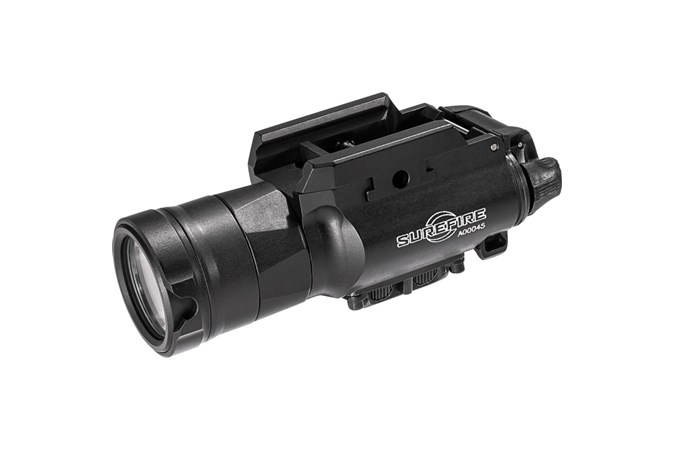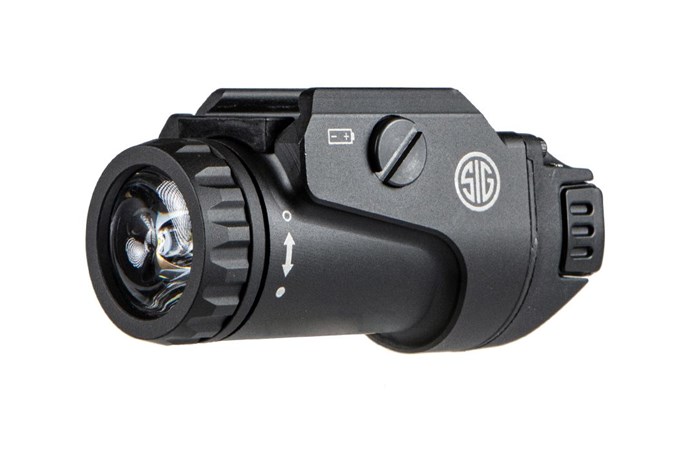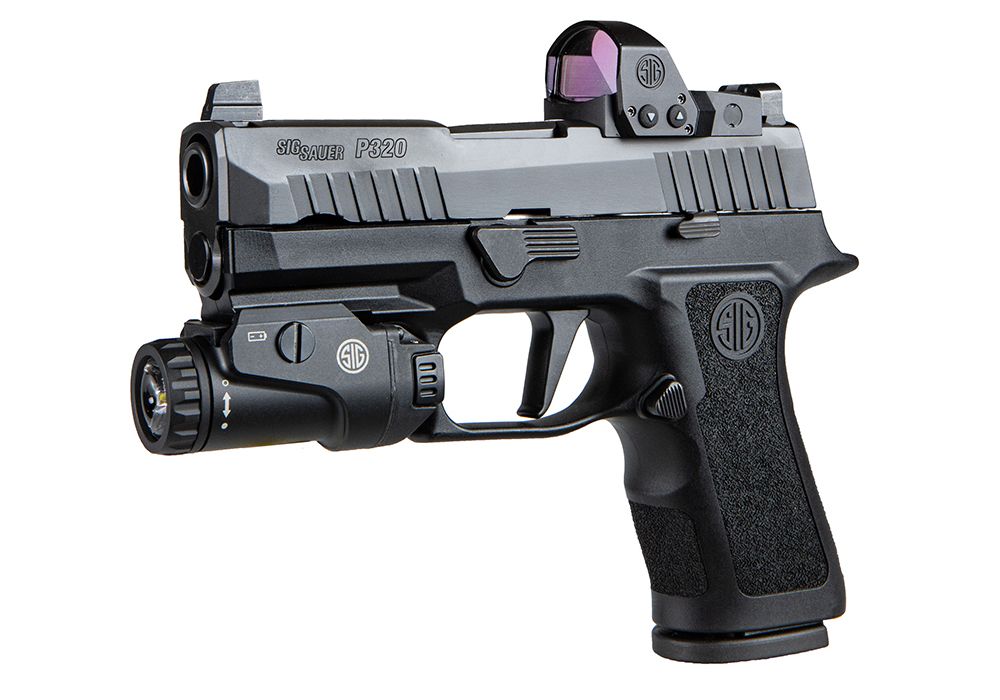Today, there is simply no valid reason to not have some form of light mounted directly on a firearm designed specifically for a defensive or tactical application. The challenge, I want to help with is, choosing the right item for the application.
As with anything, there are a ton of decisions to be addressed before choosing a weapon-mounted light. This decision is an evolution and a tedious balancing act between cost, application, and design. In full disclosure, in this article I am NOT going to tell you which light to buy, I am simply going to walk you through the process of selection so you can make your own informed decision.
Now, before I get lost in the weeds, I need to get on my soap box a little. I highly recommend that before anyone runs out and purchases a light for a defensive firearm, they should seek out and find some professional training in working a low-light or no-light situation. This will accelerate the learning curve and often re-direct the choice of the actual product to be purchased.
As we begin to navigate the process and explore the details of a product selection. The first step is making the decision, to light or not to light. To do this, we should weigh the Pros and Cons of employing a light on a firearm.
PRO – Obviously, one can maintain complete control of the firearm with both hands while shedding light into the darkness with a weapon-mounted light. This control offers a much more stabilized operation and a higher level of accuracy, especially under stress. When properly used, a weapons-mounted light offers positive target identification in the critical moment. Simply being able to see into an environment where vision is very limited is invaluable. Often deployment of an instantaneous bright light will disorient and confuse the threat momentarily providing valuable decision-making grace.
CON – While this source of illumination is a very welcome tool, offering the ability to navigate and properly identify a potential threat. There is the concern that the defender, makes themselves a target by using a light by giving away their position. Another thing to consider in the application of home defense specifically is if you illuminate a loved one in the process of searching for the perceived threat, you have just muzzled them, creating a very dangerous situation.
With the Pro’s and Con’s properly weighted and evaluated, let’s get to an informed decision-making position. When choosing lights that are designed to attach to a firearm, we must deal with several decision factors (Application, Firearm Platform, Functionality, and Budget). In a quick review of the available options out there, one finds an overwhelming array of items on the market ranging anywhere from ($29) to ($800), with an entire host of brand names and market-driven features. On its face, this can be very overwhelming.

So, let’s cut to the chase and define the decision matrix. This is a process of categorization and elimination that will get the items narrowed down properly so a product selection can be made without regret.
First, budget, let’s be honest in what we are doing. Is this an accessory for a “real application need” or is the “Cool” factor driving the decision to purchase a weapons-mounted light. The answers to this will most likely drive the categorization of products from a budget consideration. Obviously, the more regular and potentially abusive nature of the intended use will drive the budget from an overall quality and potential need for warranty work in the future.
Second, the platform the light will be used on is the simplest of all the decisions we should find ourselves faced with. Typically, we are discussing a pistol, a carbine, or a shotgun, each having their own separate and specific nuances to consider. When choosing a light, the mounting type and size of the item are critical. Next, we consider the accessibility of the operational controls on the light itself. Review carefully where the controls are located. Often the location of these operational controls will drive what platform they are best suited for.

A pistol light often is much smaller than a carbine light, and with this the LUMENs scale accordingly. With a pistol light, one needs to consider the holster options for this carefully or know that you will be in a “custom holster” situation or the less ideal, a “non- holster” situation. The light controls position for a pistol light is the most critical of all the requirements. One needs to be able to reach them with very little modification to the grip. Additionally, some pistol manufacturers have partnered with light makers and have model-specific solutions.
A carbine light is the mid-sized and should be the most durable of the bunch. Often these lights are outfitted with a remote tape switch or designed for a positional-specific placement so the item can be operated without having to change hand placement on the firearm. The lower the profile the better so working around obstacles and barricades can be managed without snag. From a usability and target identification concern, the position in relation to the optics on the firearm is also critical. So mounting options need to be available in the 3, 6, 9 and 12 O’Clock positions depending on the placement of other accessories on the firearm. The more modular the mounting the better.
On a Shot Gun, we must consider durability from a recoil perspective as well as the brightness and light source type, “Flood or Beam”. The Shot Gun application is very versatile, and the light needs to be tailored to the application. A shotgun is an excellent home defense selection, so be mindful of the Brightness and overall durability for this application.
Third, is understanding the light itself and how we will use it. So, how bright should it be? How do we measure “brightness”? Typically, Lights, like we are discussing, are measured in LUMENS, but not always. There are (3) types of internationally recognized units of measure for brightness, LUX, LUMEN and CANDELA. Since “most” of the industry in the US uses LUMENS, we will discuss, “Brightness”, in the industry standard unit of measure, “LUMENS”.
LUMEN, a measure of “Luminous Flux”, equal to the light emitted in a uniform area at a single point of one-candela intensity, which makes a single LUMEN the light equal to the ambient of one square meter from the source. Essentially, A combination of LUX and Candela. As a point of reference, a standard 100watt light bulb gives off 1500 to 1700 LUMENS.
When it comes to brightness more is better, right? Well, not always. In the dark, our eyes attempt to adjust and dilate, the rapid introduction of bright light, stresses our eyes and brain out. Additionally, in an indoor environment, light-colored walls act like mirrors and send “light bounce” back at the operator violently. This “light bounce” can destroy our vision ability and disable or handicap our ability to see. If we shine the light instantly and get a “bounce” we have effectively blinded ourselves. This effect makes us very likely to have caused ourselves to be easy prey rather than able to manage the threat, with the element of surprise being lost and our position loudly announced.
The best-suited range of workable and available light is between 200 to 500 LUMENS. If the application is going to be used indoors 200 to 300 LUMENS or outside and potentially around buildings, we want to stay in the 300 to 500 LUMEN range. Leaving lights that offer over 500 LUMENS to the search and rescue folks.
So, be informed yet practical in your choice. Pick the best light for your budget, the right light for the intended application, and your need. Find some professional training to better understand the actual application of working in a low-light or no-light situation with your defensive firearm. Having the right light source on the firearm will provide a definite edge at the right moment.

